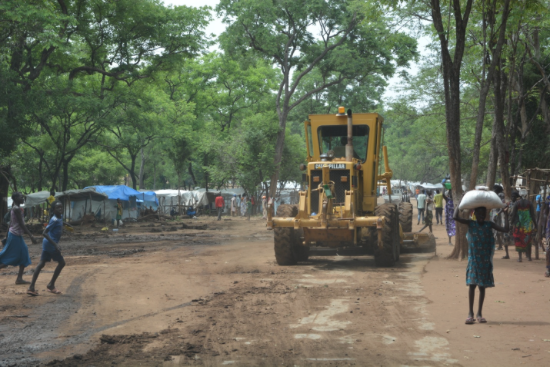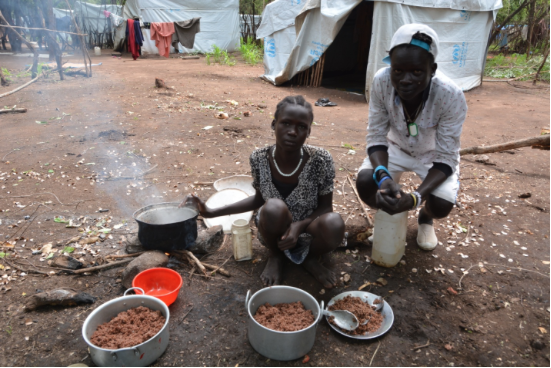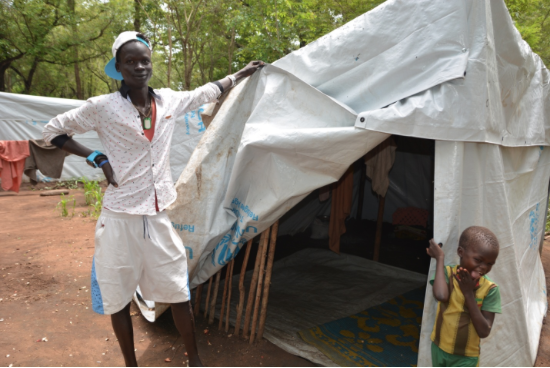
It is only two months since the refugees were relocated to Jewi, but inside Jewi refugee camp it looks like the refugees have been there far longer. Children have made friends, businesses have been established, food has been distributed and neighbours are interacting. However, there are still a lot of facilities that need to be put in place in order to assist the relocated refugees.
Yatbel and Nyalow’s family is one of the families that moved from Leitchor in May. Leitchor and Nip Nip are flood prone areas that have been challenged since the opening of the camps in 2014. Now the rainy season has started, it has become important to move the refugees to a better location. Since the relocation, Shelter construction and road clearing has commenced.

Construction of roads in Jewi camp,Gambella by NRC. The road help aid workers and humanitarian organizations access the people of concern in the refugee camps. Photo NRC/Emebet Abdissa

Nyalow with her brother Yatbel Koang. Yatbel said that he collected the firewood so that his young sister doesn’t have to go far to fetch it. Jewi camp, Gambella.Photo NRC/Emebet Abdissa
“We moved in May to Jewi where we share a small shelter with the whole family. We also do not have enough bed sheets or mattresses but we are happy that we are together and far from the fear of flood” Yatbel said.
NRC has handed out and set up 2179 newly designed, temporary shelters referred to as “Bajaje” in Jewi camp. The shelter’s frame is made out of 9 eucalyptus poles and 2.5 meters of plastic sheet provided by UNHCR. These types of shelters are being constructed due to the lack of regular tents. The temporary shelters have a short life span, but they can be useful until the regular shelters called “Tikuls” are built.

Yatbel Koang and his younger brother standing by the door of the newly built emergency shelter/ Bajaj, Jewi camp, Gambella. Photo NRC/Emebet Abdissa
The shelter is named Bajaj by refugees because of the color and frail nature of the material used. “It looks like the three wheeled car called bajaj for sure. It is very small and similar in colour. It is not comfortable but we will be fine until NRC provides shelter for us”, says Yatbel.
Most of the refugees in the camp are young and spend their days doing nothing. Yatbel is one of the young refugees in the camp. Together with his friends they gather around and chitchat most of the time. Yatbel’s friends say “there is nothing to do in the camp. If there were schools or vocational training centres this situation might change. For now, our critical issue is having proper shelter, food and security”.
Yatbel’s younger siblings also stay around the shelter playing and assisting their mom with the daily chores.
“My friends and I don’t have anything to do so that is why we gather around and talk the whole day. We need something to keepus busy, we need to learn new things that can be useful to generate income. I would be happy if I can improve the life my family has now” added Yatbel.

